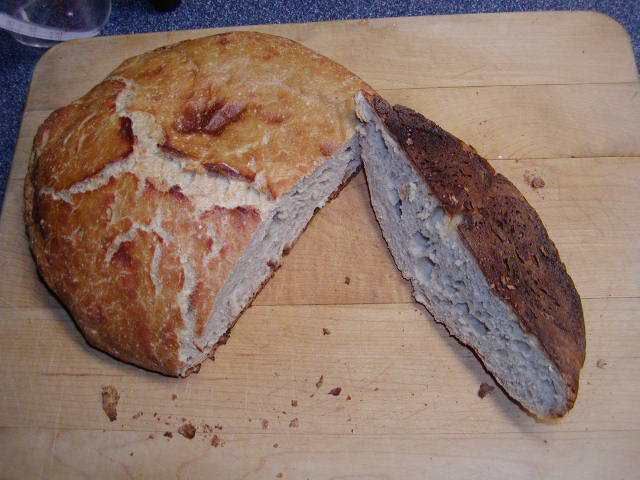I think Dmum's idea of a plastic container lightly oiled makes some sense. It's going to stick anyway you do it. I just didn't like how much dough I lost on the heavily floured towel, with plastic you could get it all out with a spatula. I agree enameled cast iron is overkill, but it's the only thing I had. I may just pick up a few cast iron dutch ovens at our hardware store.
James, the dutch oven certainly gave a better shape than my other experiences with high hydration. I guess I've just decided that's not the type of bread I like. I want a fairly thick crust.
James, the dutch oven certainly gave a better shape than my other experiences with high hydration. I guess I've just decided that's not the type of bread I like. I want a fairly thick crust.





 The developers should be proud. It's a hydrated dough, not overworked (or really worked at all). The folding gets the gluten to line up; and the big, covered pan creates a lot of steam. I'm hooked. This might be the best bread you can make without a real brick oven-- and I am looking forward to testing it when my oven is up and running.
The developers should be proud. It's a hydrated dough, not overworked (or really worked at all). The folding gets the gluten to line up; and the big, covered pan creates a lot of steam. I'm hooked. This might be the best bread you can make without a real brick oven-- and I am looking forward to testing it when my oven is up and running.
Comment